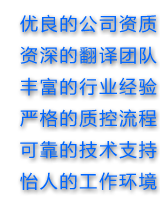夏威夷的观赏鱼产业起争议
MIKE TAIBBI: What's not to love? So beautiful, colorful, mesmerizing in their movements…miniature works of living art that can thrive and entertain for years! They're, Koles, Longnose Butterflies, and a variety of Tangs…Immortalized by Hollywood in the 2003 animated hit Finding Nemo.
FINDING NEMO CLIP: Look something shiny! Where?
MIKE TAIBBI: Today, there are tens of millions of tropical reef fish living in more than two million saltwater tanks in homes and restaurants and corporate lobbies across the world, the majority in the US…and of course in big aquariums open to the public.
But before any of these fish end up here, someone has to go out and catch them… As they do here in the aquarium fishery off of the West Coast of the Big Island of Hawai'i. It's the richest such fishery anywhere in US waters.
66 year-old Tony Nahacky and his partner Luciano Perino are among the more than four dozen or so collectors who have state permits to take reef fish. They have been at it for decades. And they're not just collectors…they select, prepare and ship the catch of other aquarium fishermen as well.
TONY NAHACKY: I love aquariums. I still help people with their aquariums. They love their aquariums just the way people, like, love their dogs, love their cats, love other pets, you know?
MIKE TAIBBI: This love affair, though, is not rooted in Hawaiian history or culture, and it's hardly universally cheered.
Environmental activists like scuba instructor Rene Umberger have been trying for years to get the aquarium fishery banned outright…
RENE UMBERGER: Obviously, it's destructive.
MIKE TAIBBI: And you want it out of business?
RENE UMBERGER: I want it all gone… not just Hawaii.
MIKE TAIBBI: But in Hawaii the debate over aquarium collecting has reached a flashpoint.
Last May, Umberger was documenting fish collecting and possible damage to the reefs as part of a team organized by the eco-activist group Sea Shepherd, when she says she was suddenly rushed by one of the collectors 50 feet below the surface.
We reviewed the video with her.
RENE UMBERGER: This one sees me, and starts charging, rips out my air…
MIKE TAIBBI: And that's your camera?
RENE UMBERGER: That was my camera so it's all topsy turvy because I'm disoriented, trying to find my air.
MIKE TAIBBI: The video was widely seen in TV news reports, and focused attention once more on an issue that's been controversial in Hawaii for years: the impact of the aquarium fishery on Hawaii's living reefs, on the popular fish species that call those reefs home, and on Hawaii's biggest industry: tourism.
Dr. Bill Walsh, a state marine biologist, is a defender of the way Hawaii has managed the fishery.
DR. BILL WALSH: The number of collectors has increased over that period of time. The number of fish being taken out and the number of fish present on the reef have increased. So it's a really powerful statement that things are working.
MIKE TAIBBI: It's been working, Walsh says, since 1999, when in response to studies showing several species of reef fish were being severely depleted, Hawaii closed around a third of the Kona coast to collectors, establishing “fish replenishment areas,',while the rest of the coast remained open to fish collection.
And two years ago, in the open areas, another key step: the state limited the number of ornamental species that could be taken from hundreds…to just 40.
The results? Dr. Walsh says extensive surveys show for example that the numbers of Yellow Tang, by far the most popular species taken, are way up overall in the past 15 years. Opponents emphasize that in the areas open to collecting, there are still many fewer Yellow Tangs than in the closed areas.
At this point in this long running controversy there are still few facts that are not in dispute. But it is now less about those facts, disputed or otherwise, than it is about the stubbornly opposing answers to a single question: Should there be an aquarium fishery at all?”
RENE UMBERGER: This is wildlife trafficking for the pet trade.
MIKE TAIBBI: But that”s a distance linguistically that you're side has been willing to go.
RENE UMBERGER: Yes.
MIKE TAIBBI: A ‘trafficker'… that's a word that's laden with meaning… ‘human traffickers, drug traffickers'
RENE UMBERGER: Yes, that's right.
MIKE TAIBBI: And she's not alone in her opposition to aquarium collecting. Native Hawaiians like Willie Kaupiko and his son Kaimi have lined up firmly against the reef collectors, saying from their fishing village of Milolii that that kind of fishing has no place in their history or traditions.
WILLIE KAUPIKO: You know, whatever you take, you're gonna eat.
MIKE TAIBBI: Only fish for food, you're saying?
WILLIE KAUPIKO: Yes, yes, we don't play with the fish. The ocean was our ice box as well as our garden, and we need to protect the resources and the ocean.
KAIMI KAUPIKO: They belong on the reef. That's where they belong. And they are part of our family,you know what I mean? They are part of us.
MIKE TAIBBI: While opinions can differ on this issue, as they do about sportfishing, and hunting, and about collecting other kinds of pets, Dr. Walsh says this is a legitimate and increasingly important fishery… and that he's frustrated at an opposition he says is based on misinformation.
DR. BILL WALSH: Why is the aquarium fishery so egregious compared to other things that we do? And a lot of it is because you get some people just kinda whipping up this frenzy of enmity towards the fishery, without really relying on solid information.
MIKE TAIBBI: Now the debate has taken another new turn that could spell the end of this fishery, collectors say.
RENE UMBERGER: Evidence shows death within the supply chain from reef to retailer are likely over 100,000 fish before getting into a hobby tank…
MIKE TAIBBI: Umberger testified on behalf of a new local bill that would require fish are shipped in at least a gallon of water and would prohibit “withholding food from aquarium life for more than twenty-four hours.” And now the Hawaii State Legislature is considering several other bills that would ban or place restrictions on how these fish are collected and shipped.
Tony Nahacky, as both a fisherman and a shipper with nearly 5 decades' experience, says he worries the changes could be economically fatal to fishermen.
MIKE TAIBBI: You couldn't do business that way?
TONY NAHACKY: We couldn't do business, in the manner that we do.
MIKE TAIBBI: He showed us how his supply chain works:
First, there's the actual collecting along the reef… individual fish chosen by size, species, and desirability and taken by hand using nets.
In the warehouse they're bagged and sealed – this three inch fish in about a pint of oxygenated water. A gallon, as some legislation would require, could increase shipping costs eight-fold, Nahacky estimates.
A lot of the activists, environmentalists would say, “we don't believe it's right to collect fish so that rich people can look at them in tanks.” That's it, that's the position.
TONY NAHACKY: So– you can characterize at that– as rich people have these aquariums. But it doesn't cover the av– average person– that buys these fish and totally loves their aquariums.
MIKE TAIBBI: For now, Tony and Luciano go out in their little skiff, as they have for so many years, to collect dozens more of these colorful fish… And if it ends for them?
Dedicated hobbyists will likely find what they seek, possibly from other countries or sources. Maybe not from these men. Maybe not from here.
——珠海翻译公司
译声珠海翻译公司目前是国内专业的翻译机构之一,译声珠海翻译公司秉承“诚信 专业”的服务理念,为国内外客户提供一流翻译服务。了解更多信息:请直接致电:400-600-6870咨询。
发表评论:













